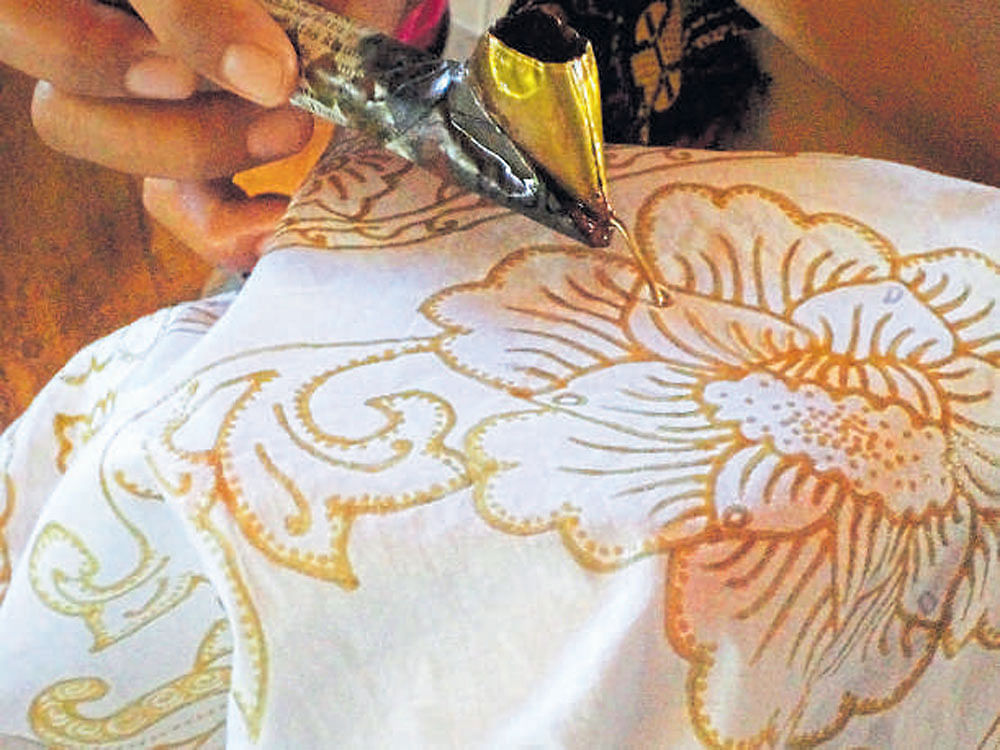
No trip to Indonesia is complete without taking a peek into its traditional fabric — the renowned batik works.
The art of making batik is practised in countries like Malaysia, Singapore, India, Philippines, Sri Lanka and Nigeria, but one would swear by the brilliant works of Indonesian batik, that has become a symbol of its glorious heritage. The world of batik is most advanced in Java and the works there are best known in terms of pattern, technique and craftsmanship.
During my recent visit to Bali, I travelled to Batubulan near Ubud, around 15 km from the city of Denpasar, and happened to drop in at Sari Amerta, the only private batik-making setup in the area that boasts of a fabulous collection of batik works. The centre also runs a live batik-making workshop.
The technique of using wax-resistant dyeing on the entire cloth is highly developed in Indonesia and has tremendous social, cultural and economic significance. Usually, cotton or silk cloth is used for making batik prints that can absorb the wax used for dye-resisting process, but it is essential to use high-quality cloth with high-thread count that can keep up the intricate design qualities of the works.
History says that the use of batik initially started in 12th century in Indonesia, and was used by one and all, irrespective of tribes, communities and religions in the country. It was in 2009 that the Indonesian batik was listed by UNESCO as one of the ‘Masterpieces of the Oral and Intangible Heritage of Humanity’. In contemporary times, batik is used in both casual and formal wear in Bali. Such works usually flaunt motifs like birds, flowers like hibiscus, fishes and the day-to-day activities of Balinese dancers.
The style of making batik in the island of Bali is quite new, but is a fast-growing industry. This 75-year-old art was first patronised by the kings of Ubud sometime back in the 20th century. Global tourists took notice of Bali batik in 1970 and the batik industry began booming in the 90s. These days, a large chunk of the famed batik works of Bali is exported to the United States and the United Kingdom.
Traditional colours used in such works are usually blue, brown and light yellow. To begin with, designs are drawn on a white cloth. The designs are then redrawn with wax and these designs are filled with tiny embellishments, wherever necessary.
Then the process of dyeing begins. Some parts of the wax portion are scraped with a knife. Later, the entire cloth is put in boiling water to get rid of all the wax, and the two colours — blue and white — are obtained. The parts where embellishments are done are covered. In order to get the second colour, dyeing is done and the wax is removed by putting the cloth in the boiling water again. The final material is washed and dried in shade. It takes up an entire month to make a single piece of batik work. The cloth has to be drawn on both sides and dipped in a dye bath four times for the process to be complete.
At Sari Amerta, one can come across an astounding array of profusely coloured batik works that are modestly priced. There are attractive silk wall hangings, pillow cover sets, T-shirts, kimonos, hand fans, silk scarves and sandals.